Five Amazing Facts about Trivial Pursuit – The most successful Canadian board game of all time
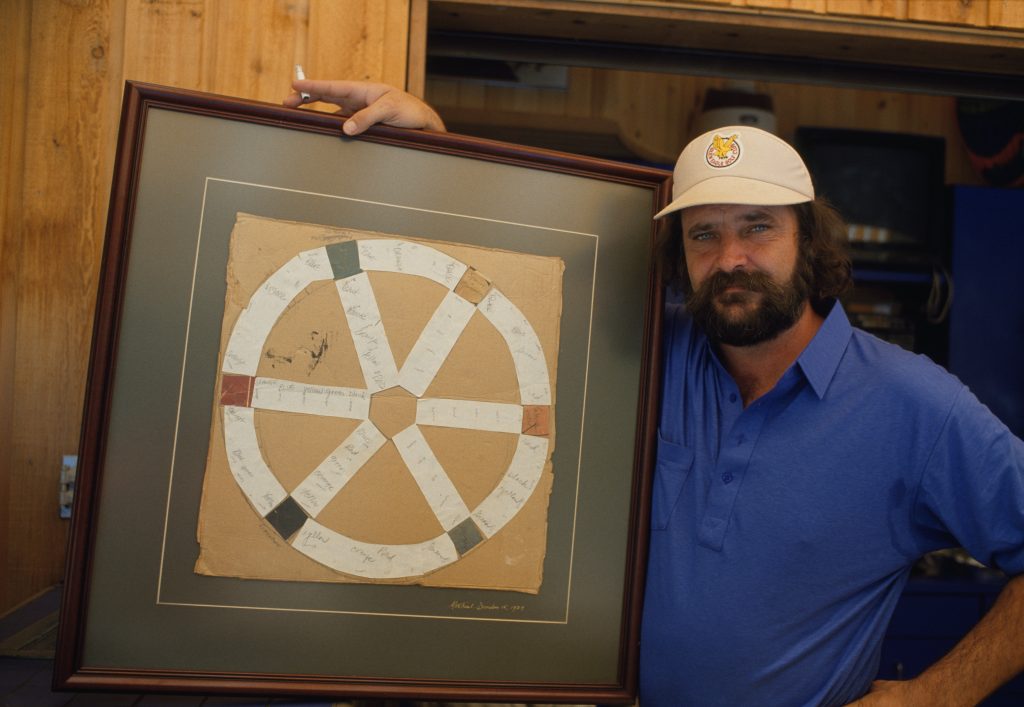
Trivial Pursuit co-creator Chris Haney holds a copy of the original sketch for the game. Getty Images 543860724.
One afternoon in December 1979, Montréal journalists Chris Haney and Scott Abbott sketched out an idea for a board game. It would have a pinwheel-shaped board and six thematic categories covering a broad cross-section of general knowledge about geography, science, entertainment, literature and sport, among other topics. By the time it was finished, the game consisted of 6,000 questions (six per card) and could be played by two to 24 players. Each player or team must work their way around the board, earning “wedges” in each category. Once all six wedges are obtained, they move to a central spot where their opponents ask them a question in the category of their choice. Informal market testing went well. Feeling they had a hit on their hands, Haney, Abbott, lawyer Ed Werner, and Haney’s brother John, recruited friends and family to invest. They called their game “Trivial Pursuit.” It went on to become the most popular Canadian board game of all time.
Read on to learn five surprising facts about a game that has sold more than 100 million copies and is still in production today.
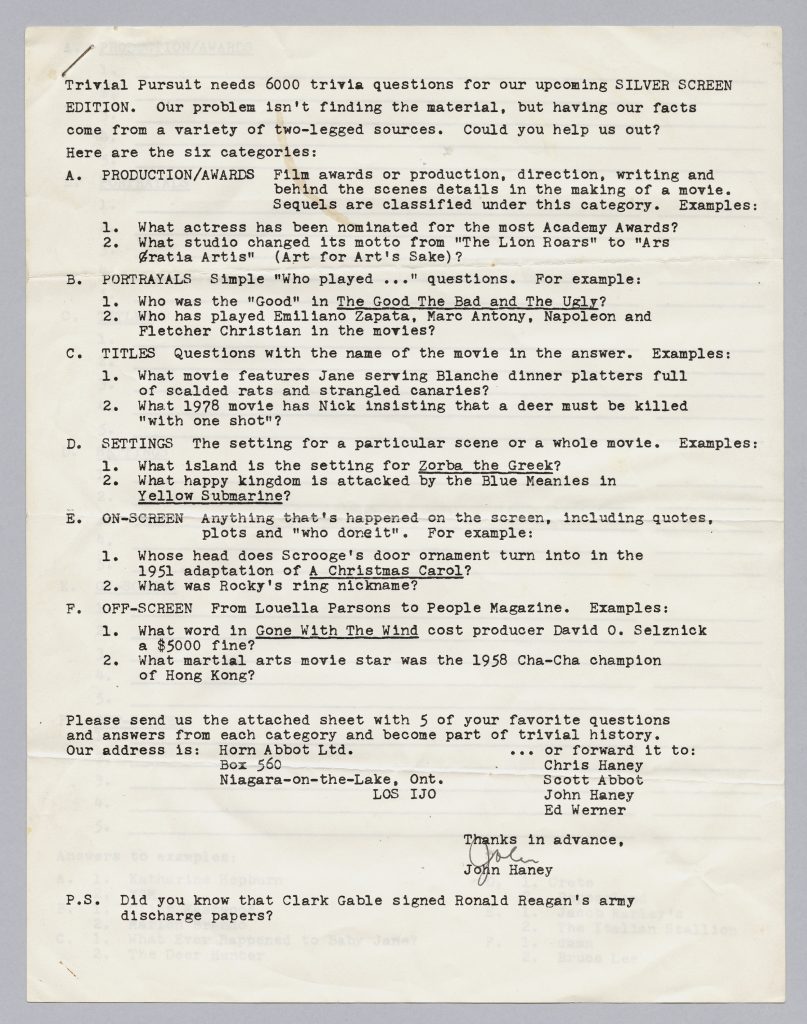
To prepare the second edition of the game, the Silver Screen Edition, Trivial Pursuit’s creators sent out this questionnaire to their investors. Canadian Museum of History, 2018-H0006-9-001 Susan McKay fonds.
It takes a village to write a question
Trivial Pursuit’s creators spent countless hours writing the 6,000 questions in the Genus edition, the very first version of the game. References to television, music, films and politics of the Baby Boomer generation fueled the game. As journalists, Haney and Abbott knew how to write punchy questions, which were workshopped among a group that included John and Ed Werner. Questions were no more than 45 characters or three lines of text. Wordsmithing was required to offer clever hints without giving too much away, and the group relentlessly edited out questions that were too obscure or boring.
Trivial Pursuit mania takes off
Something funny happened on the way to 1983. Video games flooded the market and were expected to transform how people spent their leisure time. But market saturation and the transition from Atari-style gaming consoles to home computers led to a “crash” in the industry.
In the meantime, Trivial Pursuit had gradually built momentum. Haney, Abbott and Werner formed the company Horn Abbot Ltd., and started by manufacturing 1,000 games and selling them themselves. Eventually, they secured enough money to mass manufacture the game. By 1982, games were selling out in Canada. In February 1983, the game was released in the United States and sold 1 million copies in its first year, and about 20 million copies the next. These numbers surpassed all expectations and led to thousands of copy-cat games and new releases inspired by the success of Trivial Pursuit.
Trivial Pursuit is a game with weight
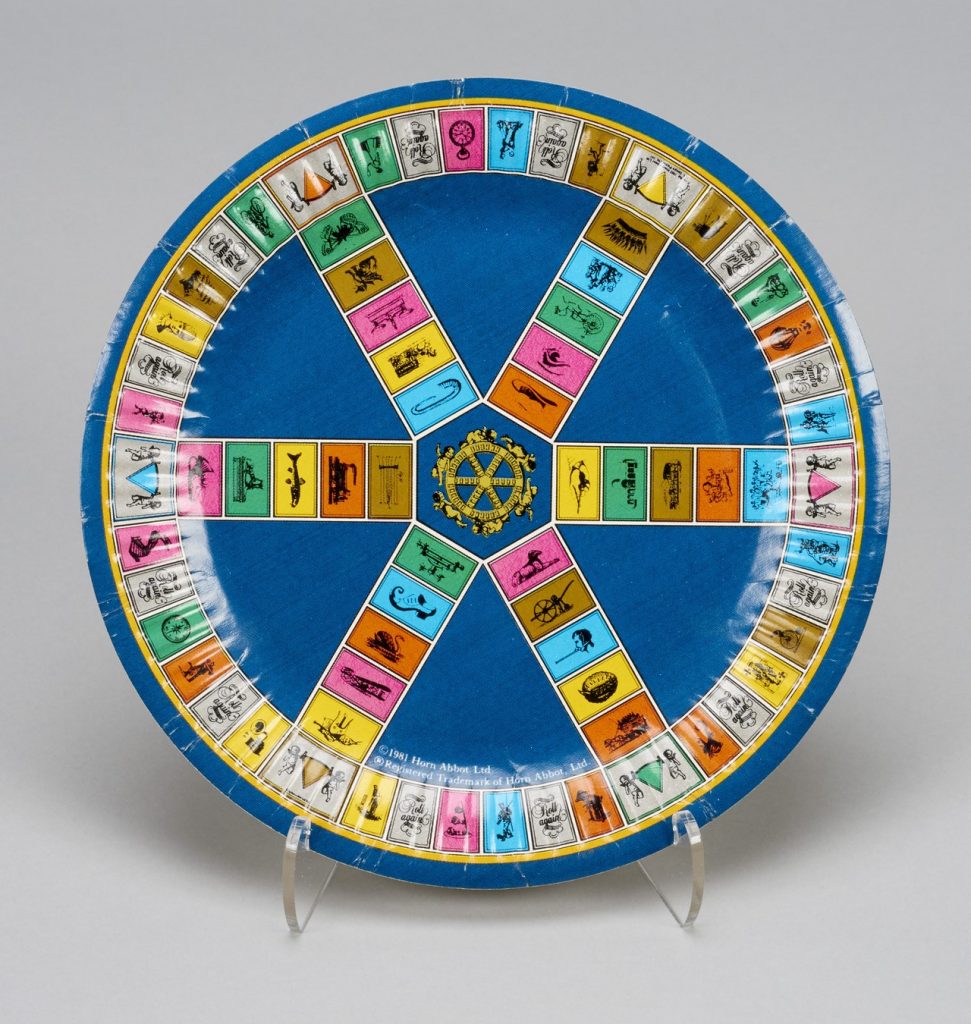
Dessert plate. Canadian Museum of History, 2015.73.74
Original Trivial Pursuit Genus Edition boxes weigh about six pounds. In 1982, Haney explained to a journalist that he wanted the materials to be “first class.” The look and feel of the game are meant to appeal to adults. The distinctive scroll logo and game board were designed by Michael Wurstlin, who traded his work for shares in the company. By the mid-1980s, Trivial Pursuit games were selling faster than they could be manufactured. “Trivial Pursuit Parties” made headlines in the New York Times and the game’s creators appeared in ads for Diet Coke and American Express. Wurstlin’s design for Trivial Pursuit was everywhere, including official merchandise featuring the game’s iconic logo.
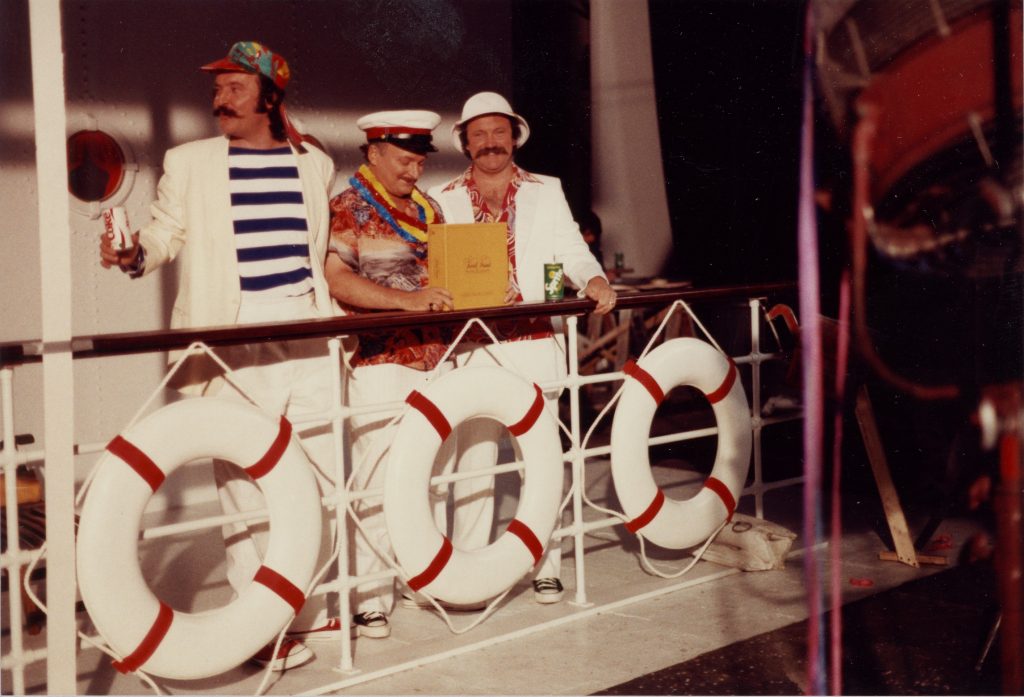
Chris Haney, Scott Abbott, and John Haney film a commercial for a Diet Coke/Sprite Edition of Genus II of Trivial Pursuit. Canadian Museum of History, Susan McKay Fonds, 2018-H0006-11.
To hit it big, scale up!
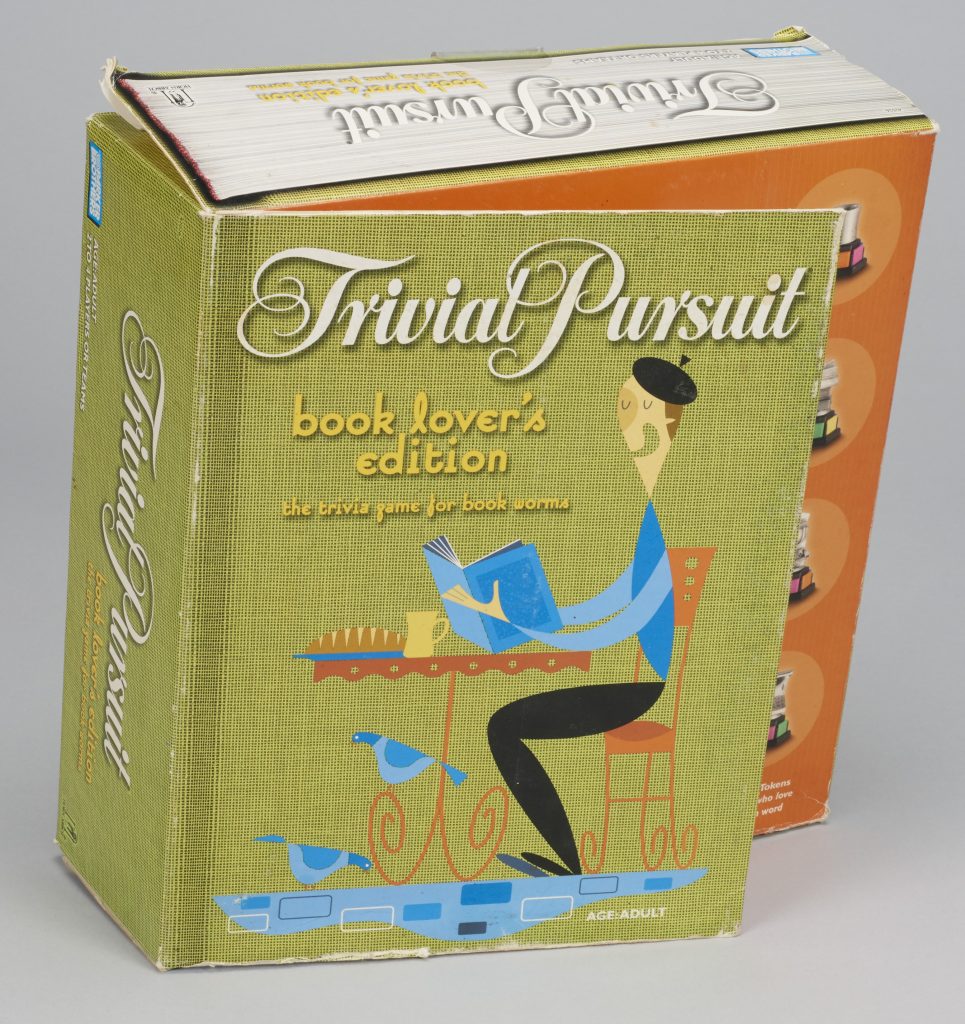
Trivial Pursuit Book Lover’s Edition. Canadian Museum of History, 2015.73.82.1
By the time the Genus Edition was hitting big, Horn Abbot Ltd. had already begun work on the Silver Screen Edition. A questionnaire was sent out to investors and friends to help generate the 6,000 questions needed for a new edition of the game. This scalability is one reason Trivial Pursuit enjoys a level of success shared by few other games. The format of the game — dice, questions and wedges — is timeless. New editions can be produced to suit any interest, in any language and context. The Canadian Museum of History holds many editions of Trivial Pursuit, including the French-Canadian versions of the game, Quelques arpents de pièges and Quelques arpents de pièges II, as well as a Finnish example and many thematic editions.
Successful games are deceptively simple
Trivial Pursuit’s magic is a combination of humour, clever game design, and timing. The worldwide popularity of the game inspired other Canadian inventors to try to create their own bestsellers. Dozens of new board games came to market in the 1980s and 1990s with some success, but Trivial Pursuit remains the bestselling Canadian board game of all time. In 2008, Hasbro purchased rights to the game and new editions continue to be released today.
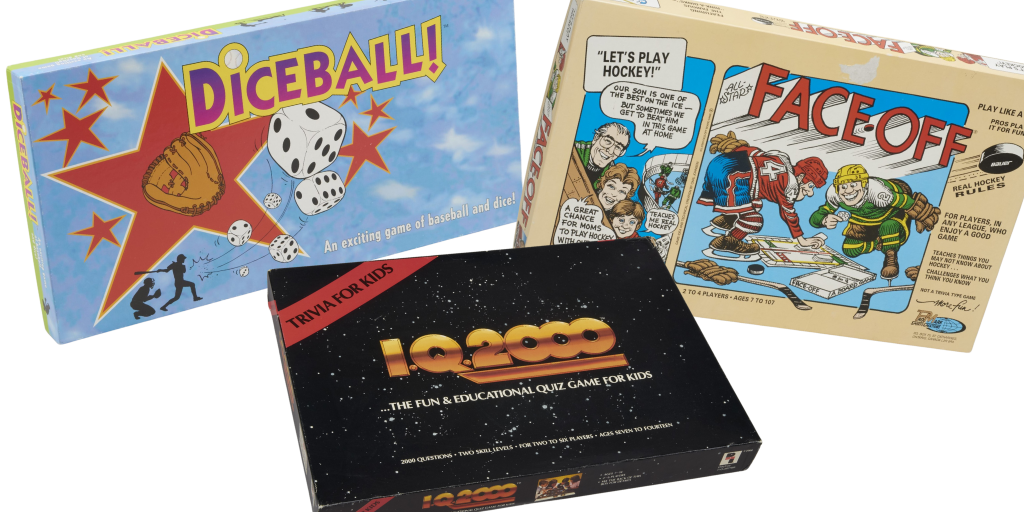
Diceball (Canadian Museum of History 2009.71.1156.1), IQ 2000 Plus (Canadian Museum of History 2009.71.1216.1) and Face Off (Canadian Museum of History 2009.71.1020.2)
Trivial Pursuit games from the Museum’s collection will be on display in the Research Centre until January 2024.

Jenny Ellison
Dr. Jenny Ellison is the Manager of Indigenous Peoples and Early Canada at the Canadian Museum of History, an interdisciplinary team of curators. Her research explores sport and leisure in the 1980s.